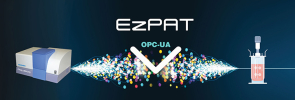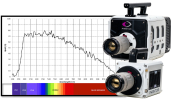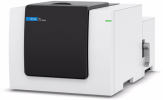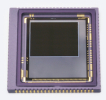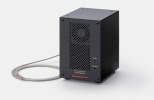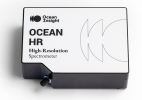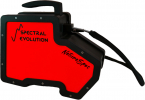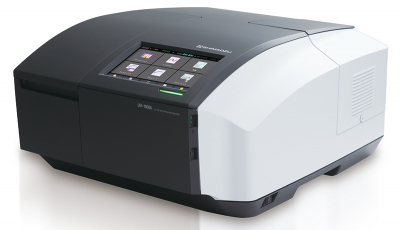
Shimadzu introduced the new UV-i group of UV-Vis spectrophotometers, consisting of six models: UV-1900i, UV-2600i, UV-2700i, UV-3600i Plus, SolidSpec-3700i and SolidSpec-3700i DUV. All of the spectrophotometers in the series include an automatic pass/fail determination for improved efficiency. The systems are equipped as standard with a spectral evaluation function in the software that automatically determines whether data satisfies specified criteria. This function helps to improve the efficiency of quality control operations by eliminating the manual data analysis steps required after spectra are acquired. The UV-i series of spectrophotometers also include automatic measurement, by connecting an autosampler unit, the systems can analyse up to 360 samples automatically. Used in combination with the spectral evaluation function, the entire process, including pass/fail determination, can be fully automated.
The UV-1900i double-beam spectrophotometer provides high resolution, low stray light, an ultra-fast scan function and an easy-to-use interface. The spectrophotometer can be operated standalone (without PC) using the touch panel or with a PC with the included LabSolutions UV-Vis software.
UV-2600i and UV-2700i double-beam spectrophotometers are research-grade instruments. The high-absorbance measurement capability and sub-nanometre bandwidths make them suitable for analysis of band gap, optical coatings and thin films, biological samples like DNA and proteins, and routine work. They are equipped with Shimadzu’s propriety Lo-Ray-Ligh® diffraction gratings for low stray light levels to obtain high-accuracy measurements of samples.
The UV-3600i Plus UV-Vis-NIR spectrophotometer has measurement capability in the UV, visible and up to 3300 nm in the NIR. The device enables characterising all types of samples including solids, powders, wafers, films and liquids.
The SolidSpec-3700i and SolidSpec-3700i DUV (Deep-UV) spectrophotometers can measure from deep-UV to visible and up to 3300 nm in the NIR, suitable for optical, semiconductor and flat panel display market needs. Other applications include haze analysis, band gap analysis, photovoltaics, coatings and optical component characterisation.


